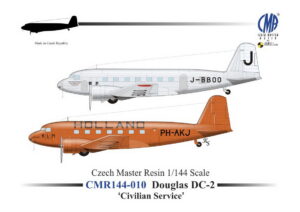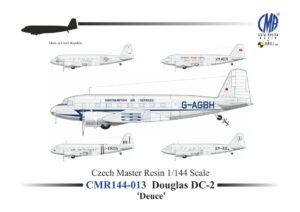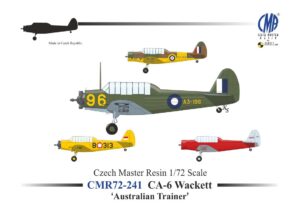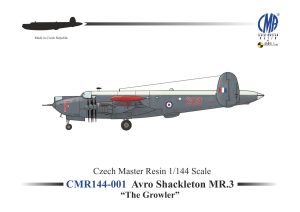Description
Short Brothers built forty-two S.23, S.30 & S.33 Empire flying-boats. All the ʼboats were assembled in No.3 Erecting Shop of the Seaplane Works at Rochester in Kent UK, beside the River Medway. The Empire boats were designed in 1934 to implement the Empire Air Mail Scheme, carrying unsurcharged letter mail throughout the British Empire and Dominions between the terminals at Southampton, Durban and Sydney – later continuing to Auckland, New Zealand. Some of the payload was available for small numbers of passengers and freight.
The boats were operated by Imperial Airways Limited (IAL), QANTAS Empire Airways (QEA) and Tasman Empire Airways Limited (TEAL) and later, British Overseas Airways Corporation (BOAC). The IAL and QEA Empire flying boats ran the Empire Air Mail Scheme & Programme for two years and ten months, ending with the outbreak of World War II in 1939. With Pan American Airways, the IAL ʼboats pioneered the Atlantic crossing and one was employed on the Bermuda-New York service. Two ʼboats were armed and impressed into the Royal Air Force to become casualties of the Norwegian campaign.
The second chapter of their service history started in 1940 when the Horseshoe Route came into operation. The Horseshoe ʼboats pounded the route, an inverted horseshoe on the map, from Durban, through the Middle East and across India, to Sydney and return. Diversions took two of the ʼboats on a shuttle operation to Crete to evacuate British military personnel. The Horseshoe Route was broken by the capture of Singapore. The ʼboats on the Australian side of the break, some QEA & some BOAC, became involved in the hostilities. Most QEA ʼboats were armed as were the two TEAL ʼboats that maintained the link between Sydney and Auckland throughout the war, doubling as reconnaissance bombers as required. Two BOAC ʼboats were converted to military status for service with the Royal Air Force. The Horseshoe Route lasted for six years and nine months.
Sixteen of the original forty-two survived the war, to be broken up. The very last Empire ʼboat remained as a landlocked exhibit in Auckland until it was hauled off for scrapping some time after 1954, so ending a significant era of aviation history. The first Empire ʼboat, S.23 Construction number S.795 G-ADHL CANOPUS, went down the slipway outside No.3 Shop in July 1936 and the last, an S.33, S.1026 G-AFRA CLEOPATRA, in May 1940.
Colour schemes included in the kit:
1) Short S.23 ‘C Class’, G-ADHL (MSN S.795) ʼCanopus‘, Imperial Airways London (IAL), July ‒ October 1936
2) Short S.23 ‘C Class’, G-ADHL (MSN S.795) ʼCanopus‘, Imperial Airways London (IAL), 1937 ‒ 1939
3) Short S.23 ‘C Class’, G-ADHL (MSN S.795) ʼCanopus‘, Imperial Airways London (IAL)/British Overseas Airways Corporation (BOAC), late 1939 ‒ early 1940
4) Short S.23 ‘C Class’, G-ADVB (MSN S.819) ʼCorsair‘, Imperial Airways London (IAL), 1937 ‒ 1939
5) Short S.23 ‘C Class’, G-AFBL (MSN S.878) ʼCooee‘, British Overseas Airways Corporation (BOAC), August 1942 onwards
6) Short S.23 ‘C Class’, VH-ABF (MSN S.878) ʼCooee‘, QANTAS Empire Airways (QEA), March 1938 ‒ August 1942
7) Short S.23 ‘C Class’, VH-ABD (MSN S.850) ʼCorio‘, QANTAS Empire Airways (QEA), February 1938 ‒ September 1939
8) Short S.23 ‘C Class’, VH-ABG (MSN S.838) ʼCoriolanus‘, QANTAS Empire Airways (QEA), August 1942 ‒ 1947
Assembly instructions:


![[CMR72-200] Short S.23 ‘C Class’ Empire Flying Boat](https://www.4pluspublications.com/wp-content/uploads/2023/06/CMR72-200-Short-S.23_box.jpg)
![[CMR72-200] Short S.23 ‘C Class’ Empire Flying Boat - Image 2](https://www.4pluspublications.com/wp-content/uploads/2023/06/CMR72-200-Short-S.23_camo1.jpg)
![[CMR72-200] Short S.23 ‘C Class’ Empire Flying Boat - Image 3](https://www.4pluspublications.com/wp-content/uploads/2023/06/CMR72-200-Short-S.23_camo2.jpg)
![[CMR72-200] Short S.23 ‘C Class’ Empire Flying Boat - Image 4](https://www.4pluspublications.com/wp-content/uploads/2023/06/CMR72-200-Short-S.23_camo3.jpg)
![[CMR72-200] Short S.23 ‘C Class’ Empire Flying Boat - Image 5](https://www.4pluspublications.com/wp-content/uploads/2023/06/CMR72-200-Short-S.23_camo4.jpg)
![[CMR72-200] Short S.23 ‘C Class’ Empire Flying Boat - Image 6](https://www.4pluspublications.com/wp-content/uploads/2023/06/CMR72-200-Short-S.23_camo5.jpg)
![[CMR72-200] Short S.23 ‘C Class’ Empire Flying Boat - Image 7](https://www.4pluspublications.com/wp-content/uploads/2023/06/CMR72-200-Short-S.23_camo6.jpg)
![[CMR72-200] Short S.23 ‘C Class’ Empire Flying Boat - Image 8](https://www.4pluspublications.com/wp-content/uploads/2023/06/CMR72-200-Short-S.23_camo7.jpg)
![[CMR72-200] Short S.23 ‘C Class’ Empire Flying Boat - Image 9](https://www.4pluspublications.com/wp-content/uploads/2023/06/CMR72-200-Short-S.23_camo8.jpg)
![[CMR72-200] Short S.23 ‘C Class’ Empire Flying Boat - Image 10](https://www.4pluspublications.com/wp-content/uploads/2023/06/CMR72-200-Short-S.23_decals.jpg)
![[CMR72-200] Short S.23 ‘C Class’ Empire Flying Boat - Image 11](https://www.4pluspublications.com/wp-content/uploads/2023/06/CMR72-200-Short-S.23_parts-bagged-and-heat-sealed.jpg)
![[CMR72-200] Short S.23 ‘C Class’ Empire Flying Boat - Image 12](https://www.4pluspublications.com/wp-content/uploads/2023/06/CMR72-200-Short-S.23_parts2.jpg)
![[CMR72-200] Short S.23 ‘C Class’ Empire Flying Boat - Image 13](https://www.4pluspublications.com/wp-content/uploads/2023/06/CMR72-200-Short-S.23_parts1.jpg)
![[CMR72-200] Short S.23 ‘C Class’ Empire Flying Boat - Image 14](https://www.4pluspublications.com/wp-content/uploads/2023/06/CMR72-200-Short-S.23_parts3.jpg)
![[CMR72-200] Short S.23 ‘C Class’ Empire Flying Boat - Image 15](https://www.4pluspublications.com/wp-content/uploads/2023/06/CMR72-200-Short-S.23_parts4-and-mask.jpg)
![[CMR72-200] Short S.23 ‘C Class’ Empire Flying Boat - Image 16](https://www.4pluspublications.com/wp-content/uploads/2023/06/CMR72-200-Short-S.23_p-e-parts.jpg)





